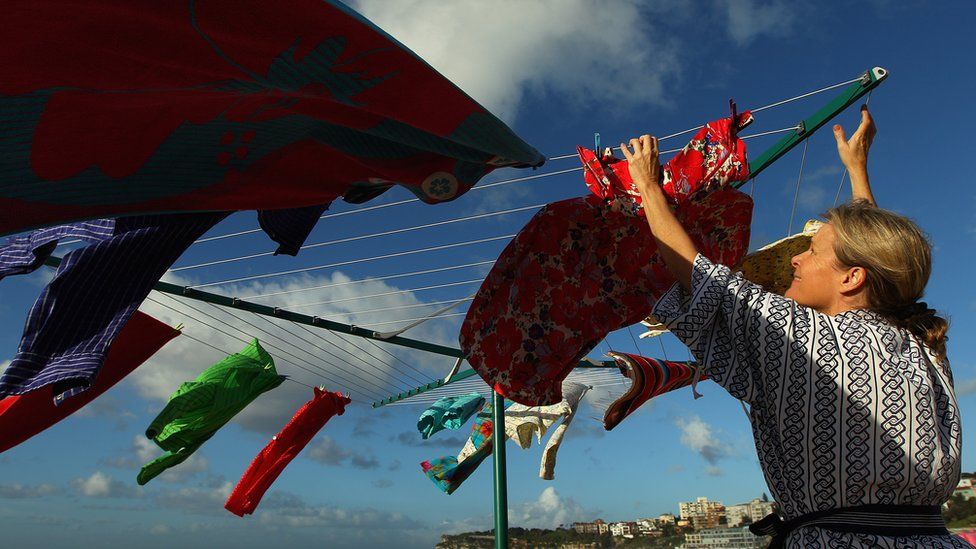Hills Hoist: Australians lament sale of a national icon
- Published

The Hills Hoist clothes line was the quintessential image of suburban life in 20th Century Australia. But now it has been sold to an American firm, many Australians have expressed sadness, writes the BBC's Ben Collins.
I remember the Hills Hoist in my Queensland yard when I was a child: the rusted creak as it went with the wind, the grease in its grooves, even the cobwebs around the crank that raised it higher.
It was one of the old ones, made of metal and strung with wire, with old plastic pegs that cracked in the sun. It was a plaything as much as a clothes line, a manmade tree from which I used to hang and look at the dead grass below.
Many people have similar fond memories, leading to fears the Hills Hoist, the great symbol of Australian suburban life, has come to the end of the line. Hills, the company which has sold the Hills Hoist since 1946, last week offloaded its home living division - including rights to the clothes line - to AMES Australasia, a local subsidiary of the New York-based Griffon Corporation.
Australians have been reminiscing about the nation's success story, and decrying the loss of the design to an overseas company. Local television programme Sunrise even said it was "un-Australian".
However, AMES has said it wants to restore the Hills brand to its former glory.
Post-war boom
According to the National Library of Australia, which lists the Hills Hoist as a national treasure, Lance Hill built the first version when he returned home from World War Two "to find his fruit trees competing for space with the family clothes line".
So he built a rotary line that could be raised and lowered, and spun to take advantage of the wind.
It was also popular, according to the National Library, because it could hold four cloth nappies (back when they were washed and re-used) on each of the four outer wires.
Hill designed the line in his Adelaide workshop and soon had orders from friends and family. The first version cost £10.10, with installation an extra £1.50. This amount was about twice the average weekly wage at the time.
Hill wasn't the first person to build a rotary clothes line - another Australian Gilbert Toyne patented a rotary design as far back as 1926 - but his entrepreneurship and good timing saw the Hills Hoist become a beloved symbol of home ownership in Australia.
In the post-war boom, many aspired to own a house on a quarter-acre block, with all the trimmings - like the Hills Hoist - which could easily fit in the large backyard.
Future demand?
While its power as a symbol has remained strong, Hills Hoists had already been manufactured in Asia for several years, and since 2015 had been sold under licence through the Masters hardware chain, which recently went bust.
But research last year showed outdoor areas on new blocks in Australia were 40% smaller than a decade ago, meaning many people simply don't have space for a rotary dryer. And of course tumble dryers are an increasingly popular alternative.
In a statement last week, Hills chief executive David Lenz said AMES offered "the best possible future" for the clothes line.
"They have a clear objective to revitalise Hills Home Living's primary categories of clotheslines and laundry products and to introduce a wide range of innovative, appealing and solution-focused products in the home and garden sector," he said.
AMES spokesman James Lomax told the Australian Associated Press they were committed to making their acquisition viable.
"We don't want Hills to be something that 'used to be'," he said.